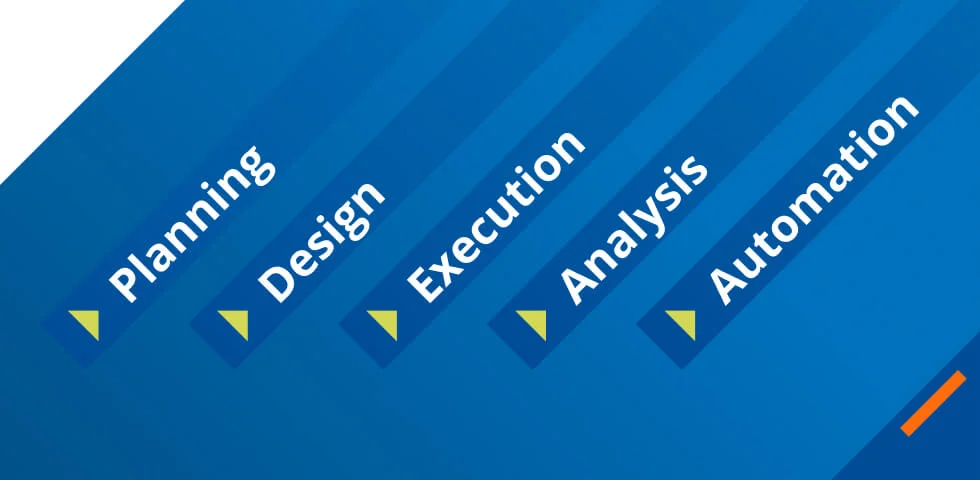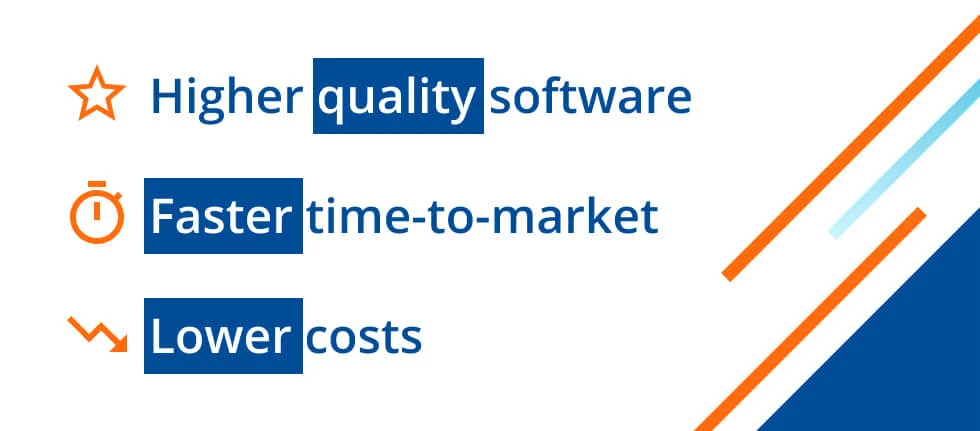What is end-to-end testing?
End-to-end testing evaluates an application’s performance from the beginning to the end of a user workflow. It tests a variety of usage scenarios to ensure that the software works as expected and meets specifications and requirements. End-to-end tests take place in a production environment or in an environment that is as close as possible to a real-world scenario.
Because modern applications are highly interconnected with other systems, end-to-end tests are designed to see how software performs as it communicates with hardware, networks, databases, and other applications. End-to-end testing occurs after the completion of other phases of the software testing lifecycle, including integration testing and system testing.
End-to-end tests enable DevOps teams to accomplish several critical tasks as they prepare to release software.
- Identifying issues in distributed environments. As organizations increasingly rely on cloud services, applications can be highly distributed. End-to-end testing is designed to pinpoint problems related to communication across multiple environments.
- Validating behavior in multi-tier systems. In addition to evaluating the overall function of an application, end-to-end testing can determine whether an application is functioning correctly in individual layers.
- Ensuring a quality user experience. End-to-end tests help determine whether an application performs as users want and need it to, and whether the user experience is consistent across various platforms, environments, and devices.
- Validating back-end functionality. In addition to front-end functionality, end-to-end tests determine whether the back-end and database layers perform critical functions as expected.
Types of end-to-end testing
Based on different approaches there are two types of end-to-end testing:
- Horizontal: Horizontal E2E testing, which is better known and more commonly used, tests the system from the user’s perspective. It simulates the end user’s activity, but in an environment prepared to be very similar to the production environment. Horizontal testing validates that the system functions as expected, users can navigate it smoothly, and there are no unexpected bugs or exceptions.
- Vertical: The vertical approach involves testing layers of a system or product in a hierarchical sequential order. Each component undergoes testing from start to finish to ensure quality. Vertical testing is often employed to assess critical components of a complex IT system that typically lack user interaction or interfaces.
How to perform end-to-end testing
End-to-end tests are conducted in a series of essential stages.
- Planning. Review software requirements to understand how the application is intended to perform in a variety of workflows and how it should respond in different scenarios
- Design. Establish a testing environment that will evaluate how well the software meets all requirements, designing test cases to test each workflow
- Execution. Run tests and document the results
- Analysis. Review the results of tests, evaluate the effectiveness of testing methods, and conduct additional tests if necessary
- Automation. Automating end-to-end tests can reduce the time and cost required for testing while making it easier to incorporate tests into a continuous integration pipeline

End-to-end testing metrics
Essential metrics involved in end-to-end testing include:
- Test case preparation status. Progress on preparing and planning test cases should be regularly tracked to ensure that testing is moving forward at an acceptable pace.
- Test progress. Tracking test progress weekly provides development teams with critical information about tests that have been executed, whether the applications passed or failed, or whether the tests were rendered invalid.
- Status report on defects. Defects that are discovered during testing should be logged daily and prioritized by severity. These metrics should also track the percentage of open and closed defects based on severity and priority, helping DevOps teams organize remediation efforts more efficiently.
- Test environment time. These metrics track the time allotted for the duration of the test environment as well as the amount of time actually required by testing, helping testers plan and allocate resources effectively for future tests.
Benefits of end-to-end testing
Higher quality software
End-to-end testing validates every aspect of an application’s performance. By rigorously testing the application from a user’s perspective under real-world conditions, DevOps teams can improve the quality of each iteration of the software.
Faster time-to-market
By enabling DevOps teams to find and fix performance issues more quickly and easily, end-to-end testing enables organizations to accelerate speed-to-market.
Mediation between specialist departments
End-to-end tests can facilitate transparency, as the tests represent a clear result and can therefore serve as a basis for communication. At the same time, this enables better coordination between the various stakeholders of the different systems.
Validation of process changes
When successful test execution occurs, it indicates that the process is ready for thorough quality assurance. This leads to more efficient testing and provides significant support for subsequent quality assurance, as any initial issues have already been identified in advance.
Lower costs
When end-to-end testing is managed and completed with an automated software testing solution, it can reduce recurring errors and minimize the need for, and costs of, repeated testing.
Challenges of End-to-end Testing
System Availability
Since the tests take place on test environments, some functions or interfaces to backend systems are not yet implemented correctly and/or do not work as intended. The availability of the backend systems, such as for the activation of services, greatly influences the results of the tests since the end-to-end tests intend to test the entire process chain. As soon as a backend system is no longer accessible or overloaded, these activations fail. Therefore, this dependency often results in delays in test execution. Furthermore, updates are usually tested/deployed in test environments.
Communication
Establishing communication between specialist departments is equally important and challenging. Each specialist department often tests the functionality of its systems, but not in combination with other connected systems or only via interface calls without a front end. This means that errors often occur that only arise in the entire process chain. This results in the creation of many error tickets.
Requirements / Customer Journey
The biggest challenge is usually the need to define and create target processes. These target processes, which are essential for testing because they serve as the basis for evaluation, typically still require definition and creation.
Quality of the Test Environment
The quality of the test environment an important factor for the result of the end-to-end tests. This also includes the quality and availability of the test data and test equipment. If test environment is inappropriate, it has a significant impact on the meaningfulness of the results.
End-to-end testing best practices
Following best practices can help in optimizing the E2E testing process and in encountering the challenges faced during practical implementation of the tests:
- Implement test automation. Instead of relying on slow and expensive manual end-to-end testing, prioritize E2E test automation. It reduces testing costs, provides crucial metrics, and ensures that it meets software quality and acceptance criteria.
- Maintain output logs. Accurately track elements and test data used during execution by utilizing logs. Meaningful log outputs facilitate reenactment and help in documenting findings directly in a ticketing system.
- Utilize a notification system. Notify team members about test runs and results using a notification system. Display test case statistics along with execution results, including links to the test plan and executed pipeline.
- Centrally store test data. Ensure test automation effectiveness by centralizing test data storage. Establish routines for synchronizing test data across different sources to maintain data integrity.
End-to-end testing with Tricentis Tosca
Tricentis offers a fundamentally different way to approach software testing, providing solutions that are totally automated, fully codeless, and intelligently driven by AI. By reducing testing times to minutes or hours rather than days or weeks, Tricentis increases enterprise risk coverage, drives massive gains in speed and efficiency, and dramatically accelerates digital transformation, application delivery, and cloud migration.
Tricentis Tosca provides a market-leading approach to test automation – one that is AI-powered, no-code, and end-to-end so it can test everything in your complex IT landscape, and ensure your business processes work flawlessly – no matter where changes occurs. Its 160+ technology support means you can test virtually any legacy, custom, enterprise and mobile application across your entire IT landscape. Tosca’s unique risk optimization and model-based approach enable you to test 12x faster, reduce risk by 85% while cutting your overall testing costs by 40%. Because these tests are model-based, your business, QA and IT teams can easily work together to create and maintain reusable test assets at speed and scale, while delivering faster business results with more confidence.
With Tricentis Tosca, you can:
- Test sooner. Achieve extreme shift left testing, by building tests based on mockup designs and automating tests before any code is written. You can also leverage service virtualization to accelerate testing by eliminating the challenge of unavailable systems or services that are costly, difficult to access or have not yet been built.
- Test smarter. Using next-generation AI-powered test automation technology, Tosca lets you keep up with application changes regardless of the underlying platform, avoiding massive rework as applications evolve.
- Test with everyone. Tosca makes test automation easy, allowing business analysts and subject matter experts to contribute regardless of their skill level.
Along with Tosca, Tricentis offers a suite of testing solutions from unified test management, end-to-end data integrity testing, app-native testing, performance and load testing, including smart impact analysis.
